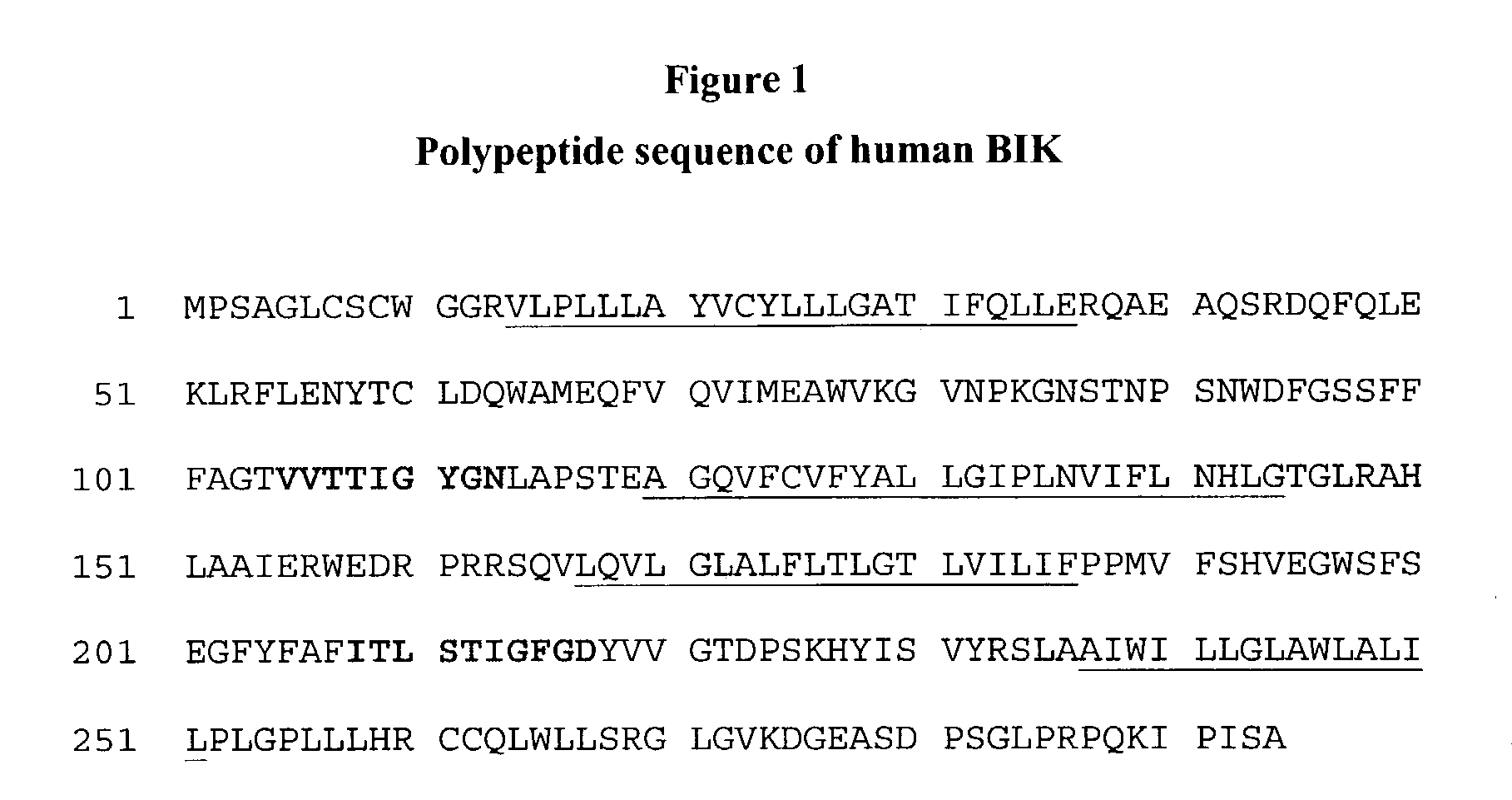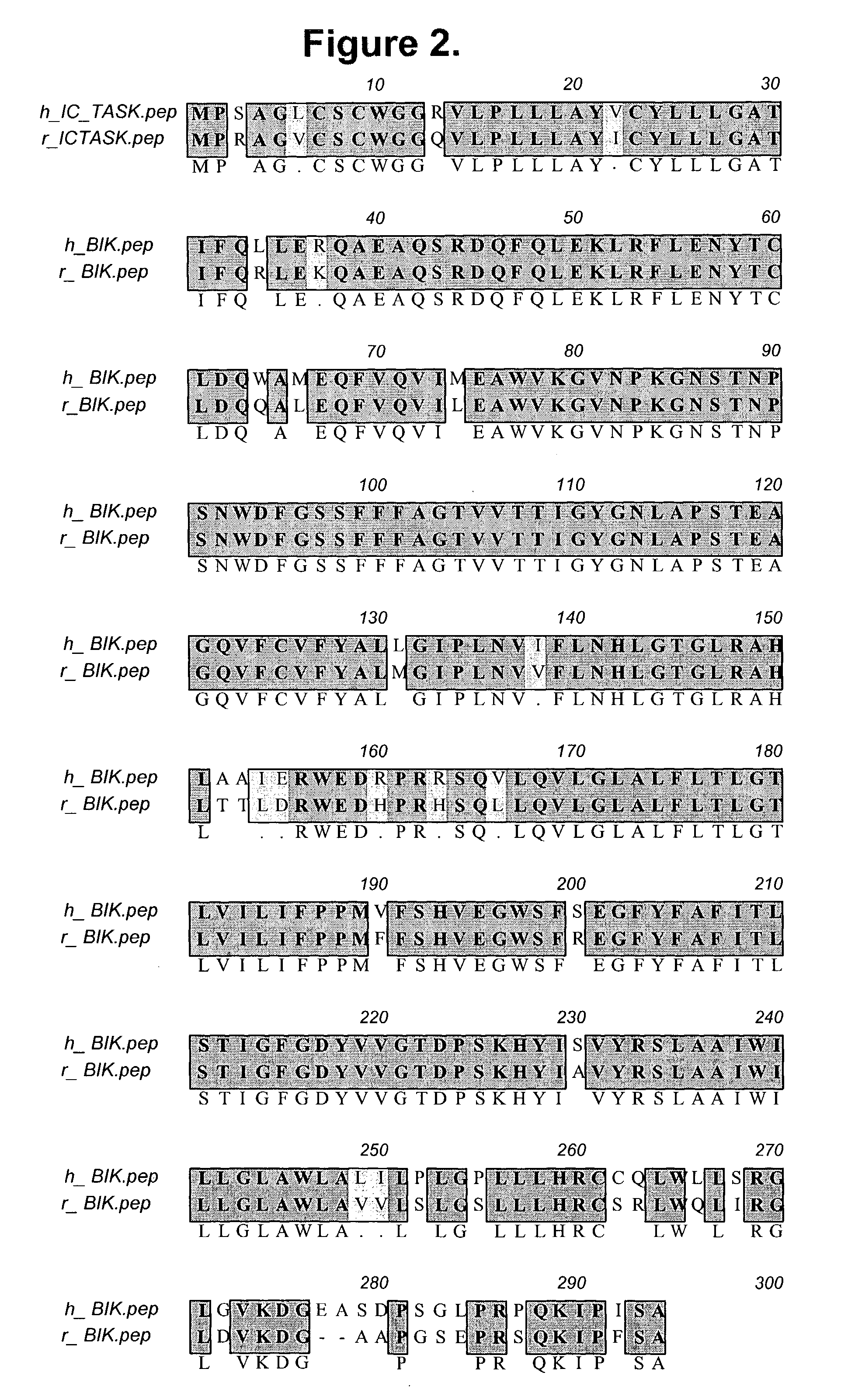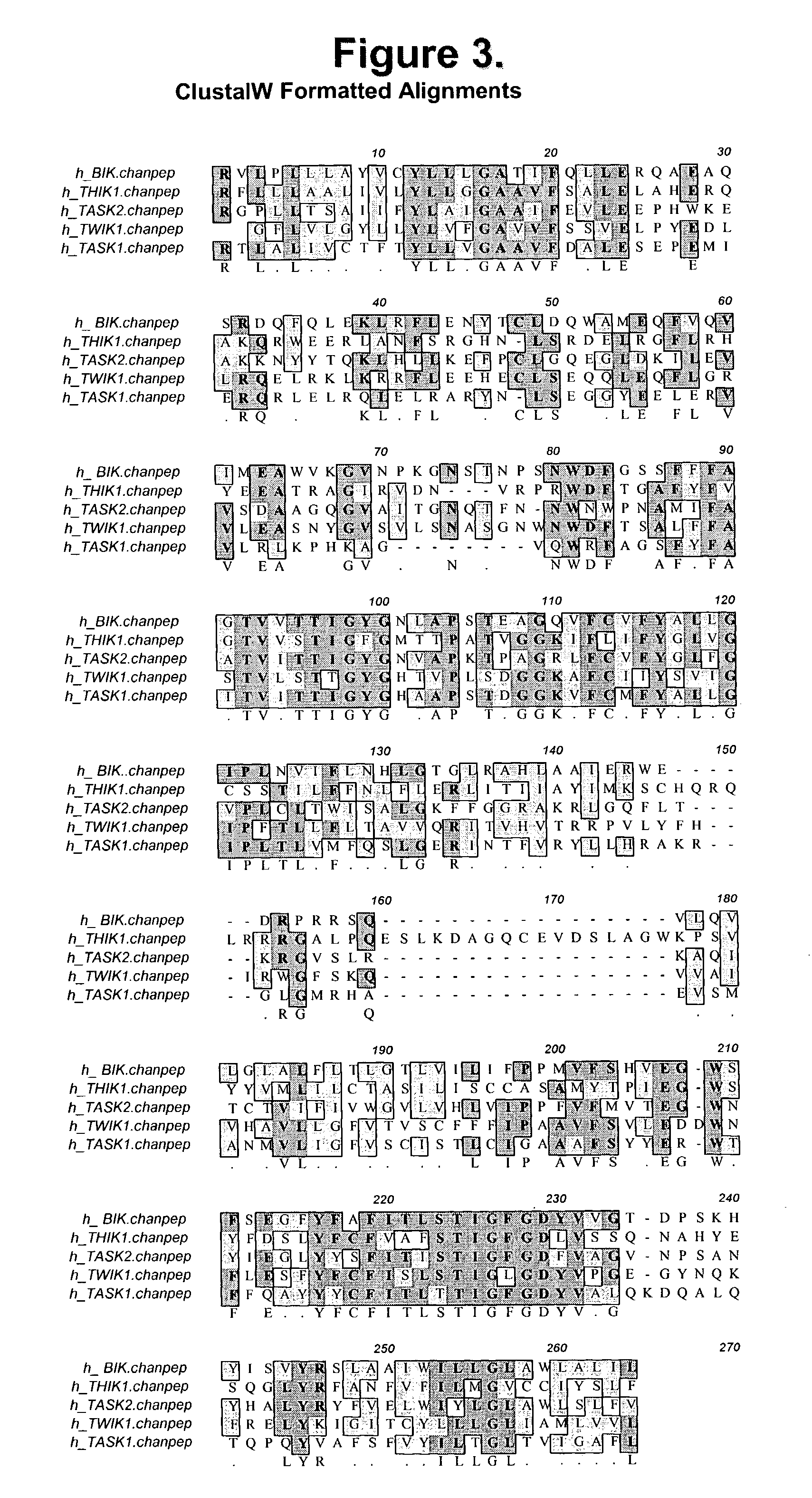Isolated islet beta-cell two-pore domain potassium channel
a potassium channel and islet beta cell technology, applied in the field of islet beta cell two-pore domain potassium channel, can solve the problems of hyperglycemia (abnormally high level of glucose in the blood), decreased secreted insulin, and not all patients with high levels of these antibodies develop fddm, so as to prevent, delay activation, and inhibit expression.
- Summary
- Abstract
- Description
- Claims
- Application Information
AI Technical Summary
Benefits of technology
Problems solved by technology
Method used
Image
Examples
example 1
[0220]This example illustrates the identification and characterization of BIK.
[0221]A K+ channel, BIK (Islet Cell-Two-Pore-Acid-Sensitive-K channel) was identified that has highly enriched expression in the pancreatic islet. Northern blots were performed using a Clontech MTN blot of 2 micrograms of polyA+ RNA from peripheral blood lymphocytes, lung, placenta, small intestine, liver, kidney, spleen, thymus, colon, skeletal muscle, heart, and brain. The blot was probed with identical probe and conditions along with a separate Northern blot loaded with 10 micrograms of human islet total RNA and 2 micrograms each of polyA+ RNA from two preparations of pancreas, testis, adrenal and spleen. A single band of approximately 2.6 kilobases is observed in islet and, to much lesser extent, in pancreas. Since islets constitute 1–5% of total pancreas mass, the enrichment in islets relative to pancreas, reflects that the BIK transcript is found in islets only, and is absent, or much less abundant, ...
example 2
[0231]This example demonstrates an assay for BIK-dependent membrane hyperpolarization / depolarization and identification of methanandamide as a partially selective inactivator of BIK channels
[0232]High level expression of a background / leak potassium channel such as BIK in fibroblasts results in hyperpolarization of the plasma membrane. Further, monitoring the membrane potential of these cells provides an assay for detecting small molecule blockers of BIK. We made stable HEK293 cell lines expressing BIK (and the well characterized background channel TASK2 for comparison) and characterized them using a FLIPR Membrane Potential Dye and FlexStation microplate fluorometer. BIK and TASK2 expressing cells displayed substantially decreased basal fluorescence with this dye than stable cell lines containing only the vector or parental HEK293 cells; this decrease is indicative of hyperpolarization. Furthermore, BIK and TASK2 cells display a 3 to 5-fold greater change in fluorescence upon depola...
PUM
| Property | Measurement | Unit |
|---|---|---|
| Tm | aaaaa | aaaaa |
| temperature | aaaaa | aaaaa |
| temperature | aaaaa | aaaaa |
Abstract
Description
Claims
Application Information
 Login to View More
Login to View More - R&D
- Intellectual Property
- Life Sciences
- Materials
- Tech Scout
- Unparalleled Data Quality
- Higher Quality Content
- 60% Fewer Hallucinations
Browse by: Latest US Patents, China's latest patents, Technical Efficacy Thesaurus, Application Domain, Technology Topic, Popular Technical Reports.
© 2025 PatSnap. All rights reserved.Legal|Privacy policy|Modern Slavery Act Transparency Statement|Sitemap|About US| Contact US: help@patsnap.com



